Buying Guide Honda Beat PP1 1991-1995
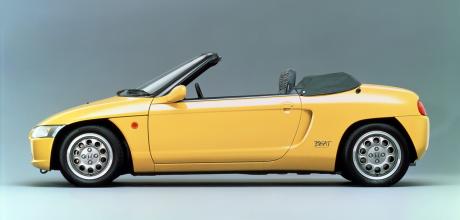
Great things come in small packages – and affordable ones, too
THE MARKET
Buying Guide
Zebra-patterned seats are a peculiar thing to be remembered for, but it’s one of the reasons the Honda Beat remains so widely adored 31 years after it was launched. Designed within the confines of the tax-beating ‘kei-segment’ city car regulations, this roadster was aimed squarely at the Japanese domestic market, pushing the very limitations of what could be packaged within such confining parameters.
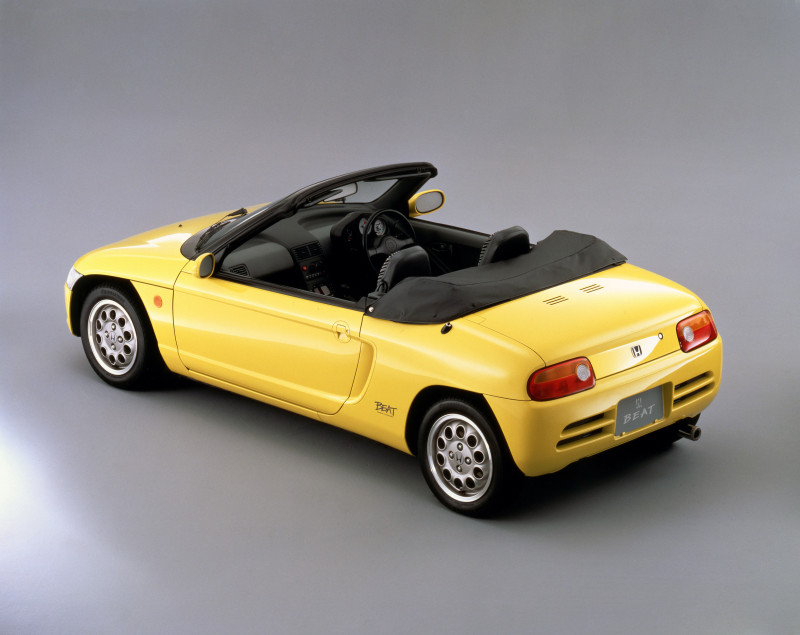
Developed by a young team of engineers looking to capture the spirit of the older Honda sports cars, it was launched in May 1991 – and thought to be the final car signed off by Soichiro Honda himself. Styling was by Pininfarina and, although the seats might be a focal point, the whole car is full of interesting details. Lifting its ’90s Honda interior is an attractive gauge cluster that puts a white-backed 10,000rpm rev-counter front and centre.
Thanks to Honda’s experience in building small-capacity engines, it’s no surprise that the Beat’s mid-mounted 656cc three-cylinder is an absolute gem.
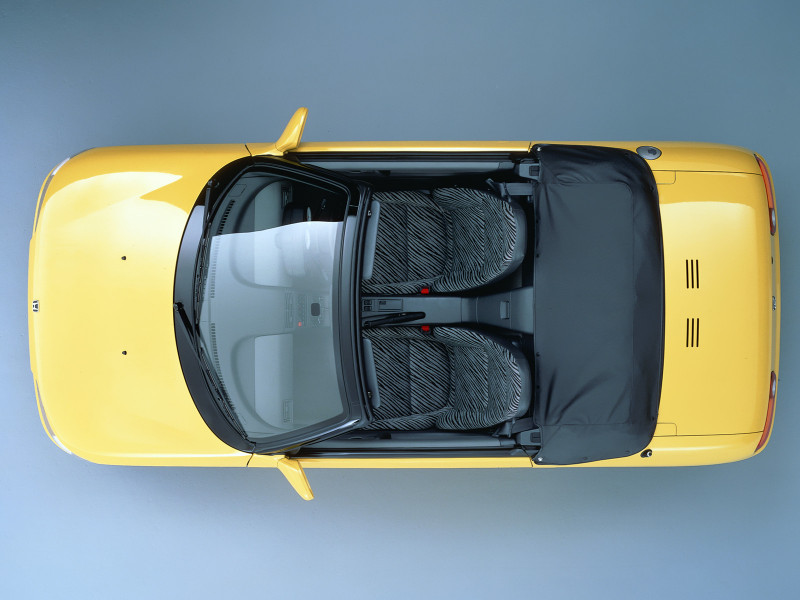
Producing the mandated 63bhp without the help of forced induction, this engine featured Multi-Throttle Responsive Engine Control – in effect individual throttle bodies. It’s a real screamer, revving comfortably to 9000rpm, and there’s a typically slick Honda five-speed manual gearbox to make eking out every horsepower a real joy. Which is good, because it doesn’t deliver its full 44lb ft of torque until 7000rpm. It’s definitely not fast, taking 13.3 seconds to hit 62mph, and going on only to an electronically limited 86mph top speed. But that’s not the point. This is a car that plays to its strengths, the low 760kg kerb-weight giving the Beat an incredibly nimble and lithe chassis, while narrow 155-section tyres keep the limits low and feedback high. It’s rewarding to drive.
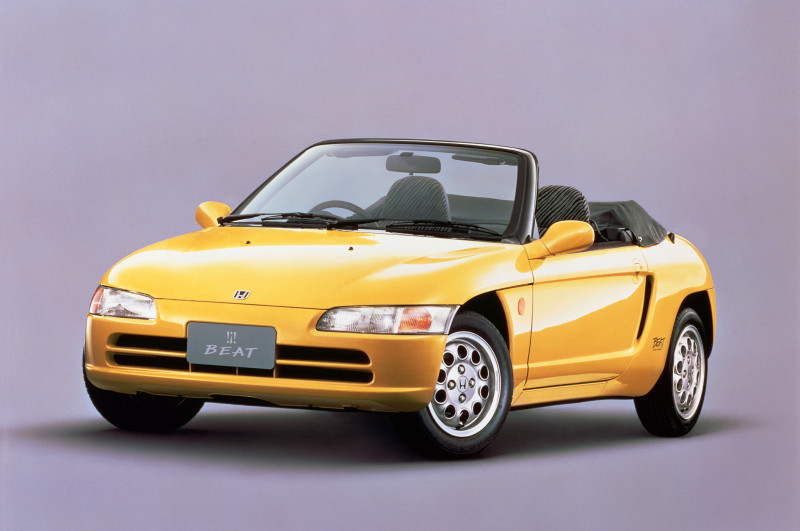
The original PP1-100 model was the most basic, running on steel wheels but with air-con and electric windows as standard. The PP1-110 added a limitedslip differential and ABS. Four basic colour options (yellow, as pictured, was the most common) were supplemented by three ‘Version’ models, each one offering additional colours and a slightly better spec, including alloy wheels as standard.
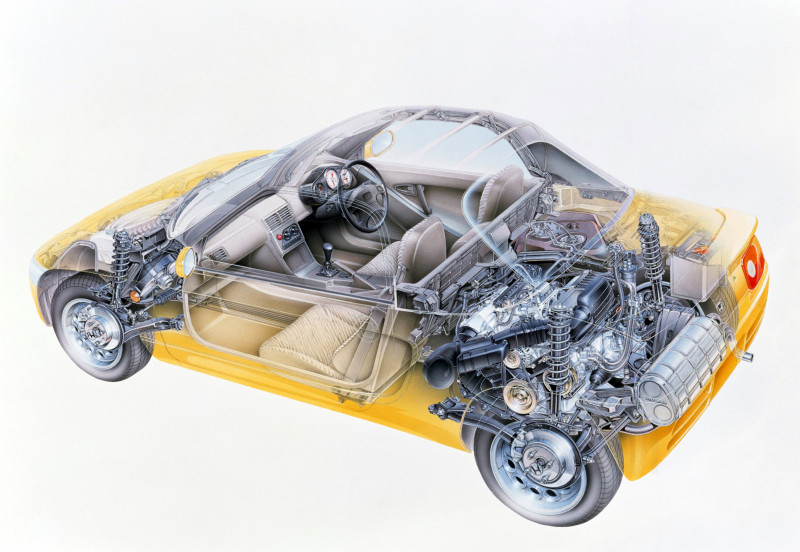
Despite an initial flurry of excitement, the Beat wasn’t a huge seller. When production came to an end in 1996, a mere 33,600 had rolled off the Suzuka production line. Although well-received and well-loved by enthusiasts, it wasn’t replaced. Not immediately anyway. Honda revisited the idea of a new kei-sector sports car after almost two decades, launching the S660 in 2015. It might not share a name, but the dimensions are identical (thanks to the kei regulations), and it remains a mid-engined two-seater.
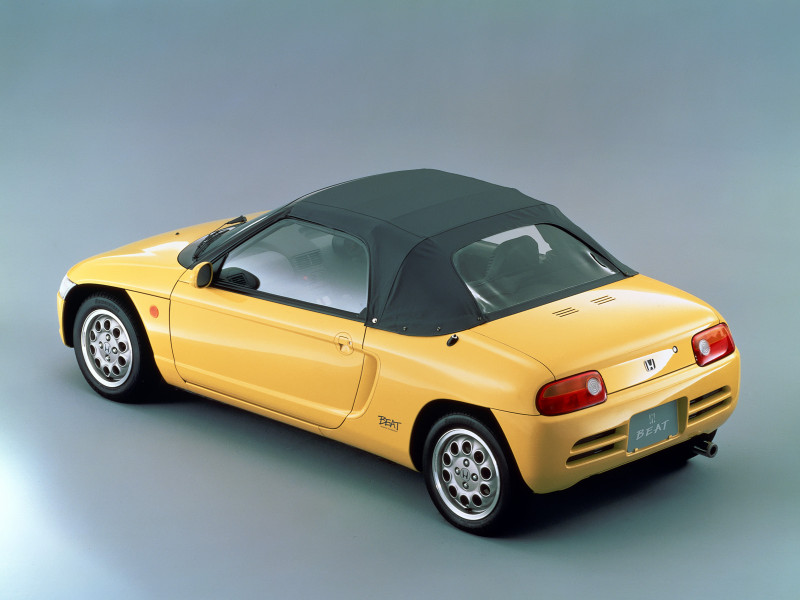
This is the Beat’s spiritual successor, and again it was destined to be sold only in Japan.
The original is fondly remembered, and although a cult classic it remains pleasingly affordable. Numbers in the UK have always been small, but today they’re seriously rare and almost forgotten about. Finding a good example might take some time, but drive one and you’ll realise that it’s worth the effort. Here is pure driving enjoyment distilled.
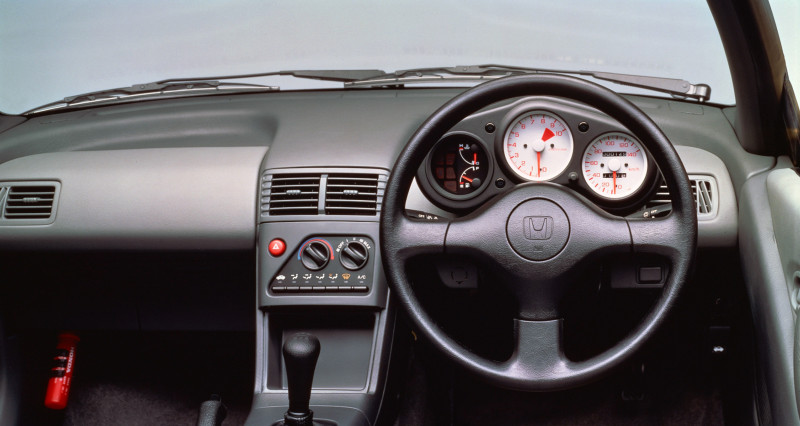
THE LOWDOWN
WHAT TO PAY
Finding a rough example isn’t difficult, with some cars in need of attention starting from under £1000. Expect to pay upwards of £3000 for an example in good health, with a real minter anywhere from £5000 to £10,000.
Prices in Japan are generally higher, but there is still a good supply of cars. They’re being snapped up by the US market, so don’t expect to find many bargains.
WHAT TO LOOK OUT FOR
It’s a 1990s Honda, so the priority is to check for corrosion. Cosmetic rust on the outer panels is the biggest problem, but inspect the underside thoroughly – especially if it has lived in the UK for long. The tiny engine loves to rev, and requires regular servicing. Abused or higher-mileage cars tend to burn excessive amounts of oil, which usually means piston ring wear. Some parts are difficult to source, but Honda has re-introduced a few.
And can you actually fit? The cabin is tiny: not a friendly place for larger people.

